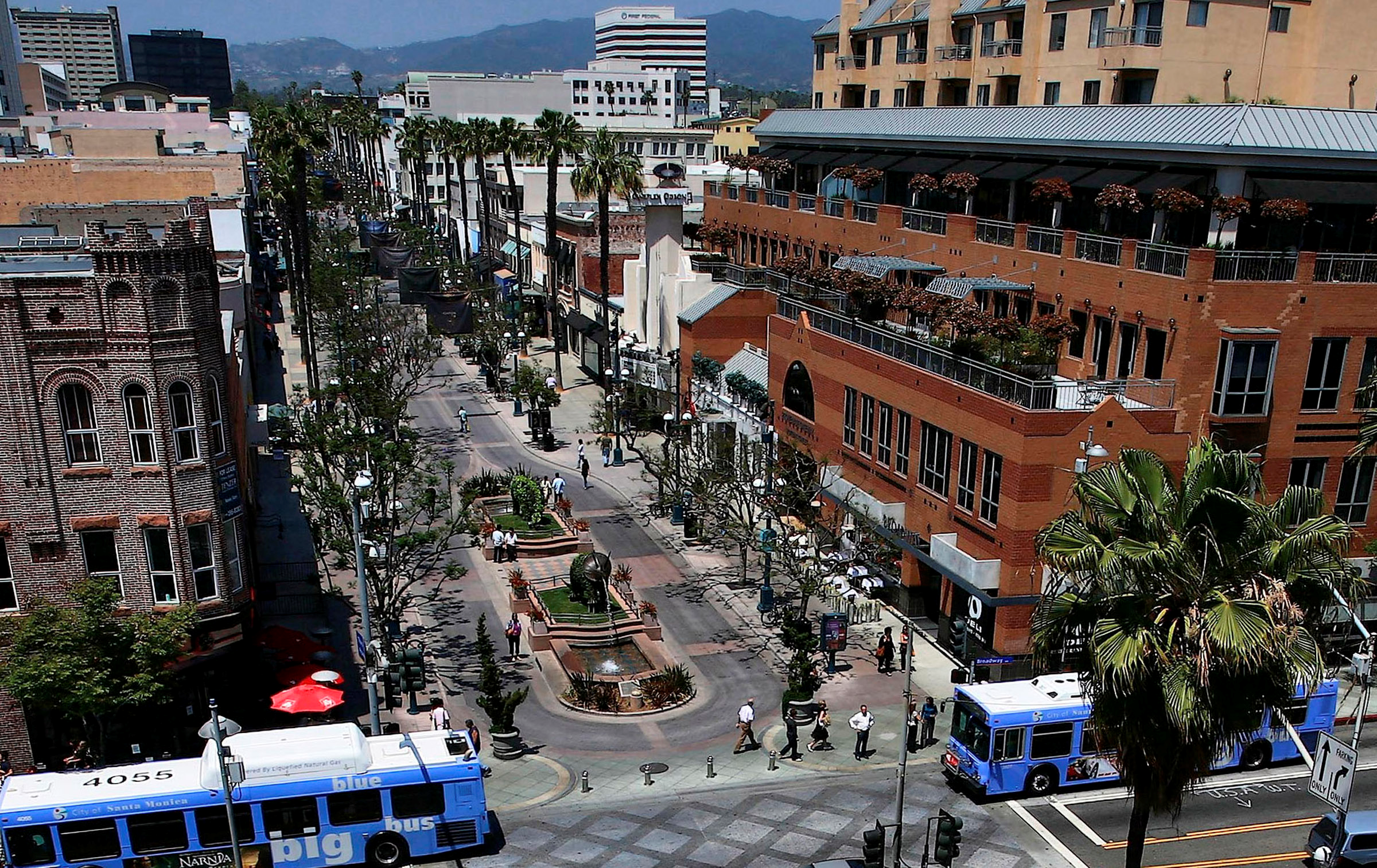SANTA MONICA—City officials, community leaders, and residents gathered at Santa Monica’s Civic Auditorium Wednesday, April 12, for the unveiling of the final version of the city of Santa Monica’s Downtown Community Plan.
The plan, which is the result of a four-year outreach and development process conducted by the city, will be used by local officials to shape city policy of the downtown area over the next 20 years. City planners walked attendees through the key points of the document, focusing on how they had incorporated years of community input into a comprehensive vision of the city going forward.
“We heard thoughtful and heartfelt input from every corner of our community.” said David Martin, Director of Planning and Community Development. “We know that Downtown is a beloved public space that thrives because of its existing character. This final draft Plan takes a balanced approach towards preservation of our historic assets, the need for more housing options and allowing local businesses to continue to succeed.”
The city collected the views of more than 2000 residents, community advocates, local businesses, and neighborhood associations, using a variety of methods to collect the data used in their analysis including an interactive website, online surveys, public hearings, and simply hitting the street to find out how Santa Monicans viewed the future of downtown.
“We’ve been working putting the vision of the whole community into a plan for the downtown. We’re finally at our final draft of that plan,” said City Manager Rick Cole during a Santa Monica City TV interview on April 8.
The result of this outreach revealed that the concerns of residents centered around seven main issues: an increase in affordable housing; a “lower scale” downtown; improved economic diversity; a desire for vibrant streets and public places; a fluid transportation network; more art and culture; and finally, a preservation of the downtown’s history.
The comprehensive, 271-page plan takes these concerns into account, with significant sections devoted to each of the issues raised by residents.
Downtown Santa Monica will be sectioned into six land use districts, each with its own distinctive character. Lincoln Boulevard will be transformed into a “mixed-use” boulevard that focuses on pedestrian walkability and amenities. An area between Wilshire and Broadway will become the “Neighborhood Village,” doing away with surface parking lots and low-scale apartment complexes to promote new commercial areas for “creative” businesses and non-profit organizations, as well as creating significant open space for public use.
The city will make use of two pedestrian focused urban concepts, “paseos” and “parklets,” both which are common in the bayside city of San Francisco, CA. A “paseo” is a pedestrian walkway connecting two adjacent streets, using landscaping and the manipulation of natural or artificial light to create a beautiful thoroughfare. “Parklets” are extensions of the sidewalk into the parking lane of a street, allowing residents to dine, read a book, chat with friends, or just relax.
Traffic management is also a major focus of the plan. Downtown will be promoted as a pedestrian area, with visitors and residents encouraged to walk or bike to their destinations through sidewalk widening, bike lanes, and intersection “scrambles,” which allow pedestrians to cross intersections diagonally.
Other sections focus on prioritizing new housing units for diverse income levels, as well as maintaining the small town character and charm of the city by mandating that new development contribute “high standards of architecture, urban design, and landscaping.”
The plan concludes with 39 pages of “implementation actions,” which describe the “actions necessary to realize the downtown vision.” These actions detail the strategies that will be used to implement the building of public infrastructure projects, ordinance changes, and the new regulations the city will require accompany them.
Although grand in scope, officials say that only 15 percent of downtown property will be redeveloped over the next 20 years, mostly due to the city’s already “built out” condition. However, each of these projects will be significant, ultimately being guided and reviewed by city officials over the coming decades to comply with the intent and requirements of the Downtown Community Plan.
Now that the finished plan has been revealed to the public, it will move into its final phases with a series of hearings by the Santa Monica Planning Commission; the first scheduled at City Hall on Wednesday, April 26.
The Santa Monica City Council will hold final public hearings on the Downtown Community Plan this summer.







